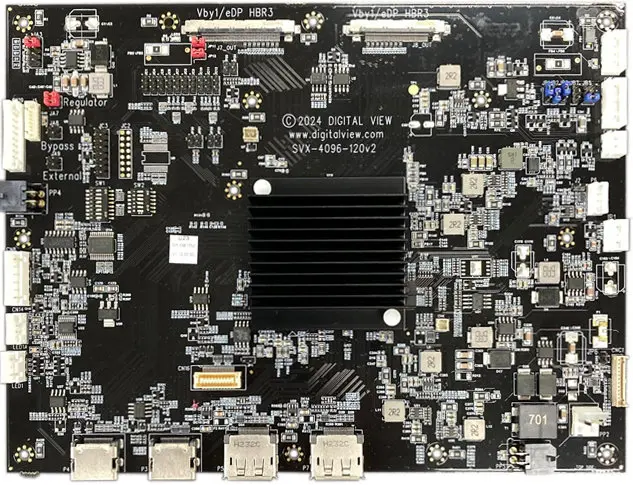About
Digital View, enabling digital display systems since 1995.

Over the past 30 years, as the major electronics companies evolved the consumer LCD TV market, Digital View has played a key role in enabling the commercial and industrial display market through its high-reliability LCD controllers.
Since 1995
Founded in March 1995 in England and Hong Kong by James Henry and Richard Cobbold, Digital View expanded to California within a year. Over its 30-year history, the company has become a trusted provider of controller and interface electronics for LCD monitors and video displays in professional, non-consumer applications. We serve specialized markets including marine, defense, medical, transportation, industrial, and digital signage.
“Enabling” has always been a defining word for us. Our goal and expertise lie in providing solutions for engineers designing and developing display systems to meet specific requirements or use cases.
Pioneering the Early LCD Era In the early days, LCD technology was still in its infancy. Panel resolutions rarely exceeded 1024x768, and most displays used TTL interfaces with sizes below 20" and a 4:3 aspect ratio. Common input signals included Composite Video (PAL, NTSC, SECAM) and VGA, while analog Component Video remained standard in professional markets. Digital View established itself early by delivering controllers tailored to these formats, meeting the needs of niche display applications.
Adapting to Industry Evolution As display technology advanced, Digital View stayed at the forefront of innovation. We responded quickly to industry milestones such as the broadcast sector’s adoption of HD-SDI (1998) and the consumer market’s transitions to DVI (1999), HDMI (2003), and DisplayPort (2006). Our adaptable controller solutions enabled the development of advanced, application-specific display systems across industries.
Today's Landscape Non-consumer LCD panel technology now delivers resolutions up to 4K (and some 8K) with panel sizes reaching 110”. Interfaces such as LVDS, eDP, and V-by-One dominate, while new form factors, like banner panels, expand design possibilities. Additionally, low-power color ePaper displays for indoor and outdoor use are now a commercial reality. Digital View continues to support the latest innovations, helping our customers stay at the leading edge of display technology. Explore some of our web pages:
- Digital View Home Page
- Summary of Digital View controller boards
- Controller Solution Generator matching displays with controller boards

LCD Controller Board Release Date History
Release History
EPL-200, EPL-300
Display Industry Milestones:
- VGA - 640x480 introduced in 1987
- XGA - 1024x768 introduced in 1990
During the 1990s the consumer industry started moving away from standard 4:3 aspect ratios as well as moving to digital interfaces.
- DVI was introduced in 1999
- HDMI was introduced in 2003
- Displayport was introduced in 2006
- USB-C with DP Alt mode, and Thunderbolt are now in consumer devices
Products
Tracking the developments in the LCD panel technology and the release of video signal standards Digital View has released an average of three new models a year while also maintaining a long product lifecycle. To provide display system developers with the easiest route to making a finished product we sought to provide flexibility both for the input signals and the output panel support with our multi-panel functionality.
In addition, to further enhance the capabilities of finished displays we added RS-232 command support followed by Ethernet connectivity. This was complemented by a range of accessories that included the basics such as the on-screen menu function buttons and various cables as well as more application specific functions such as display monitoring for the digital signage market.
For display systems to be used in harsher environments, complementary versions were released with higher spec components, physical modification and conformal coatings. A controller product summary is available here and we cover many topical issues on the Digital View Blog here.
